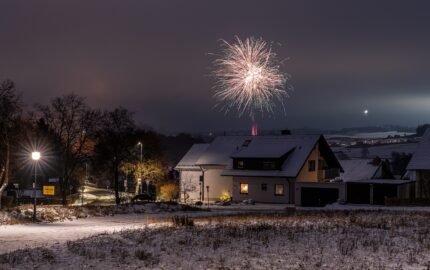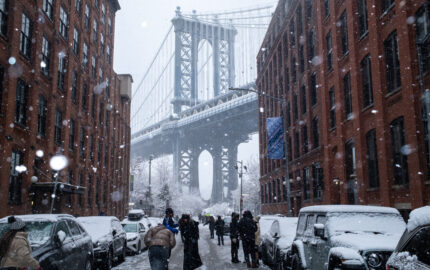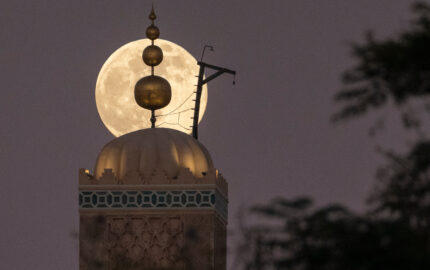The email that pinged my inbox Wednesday, as an assault on the U.S. Capitol was at its most intense, was quick and blunt:
"Aren't you glad you're not out there?"
I responded with similar blunt speed:
"No. That's exactly where I want to be."
More chatter like that peppered my social media threads the next day, as journalists — many retired, many covering local events far from D.C. — weighed in about their level of passion for being in the heat of the action during moments like this. The results were more than mixed.
Scanning them gave me some perspective, and a gut check on my own twitchy instincts. I know I can't do that kind of chaotic street reporting anymore: It takes physical agility and stability that I can no longer conjure. It takes astonishing endurance — something that can be fueled by adrenalin but must be paced: It is a marathon run at sprint speed, and I'm out of shape. It also takes a certain kind of calm — the ability to set aside opinion and emotion except as informants of sharper reporting; at this point, I haven't been able to cool my white-hot rage or soothe my shattered heart.
So what makes me yearn to be out there? Grief for my Energizer Bunny youth, no doubt. And nostalgia for the sense of fellowship that comes with being part of a newsroom determined to rise above any and all challenges.
But I realize the real attraction is the clarity and purpose that kind of work brings. There is no time to rail with futility or pace with helplessness. The tumble-dryer of noise in your brain fades to a whisper as all your attention lasers on getting the story, and getting the story right. The never-ending rise of questions aren't troubling nags, but valuable assets: The job demands that you quit stewing and go in search of answers. Anxiety funnels to a point of clear action.
Most of all, you feel useful.
Dozens, maybe hundreds, or journalists stood in that crucible of purpose Wednesday, on the streets or in whatever space serves as their newsroom these days. And, in what has to be seen as a gift to the world, some were in the Capitol itself. A report from one of them caught my attention Thursday morning, and spoke to all that I was feeling.
Sarah D. Wire is a congressional reporter for The Los Angeles Times. She was thrilled to go to the Capitol Wednesday for what promised to be a historic certification of a new president. Or, as she wrote: "It's not just a news story. It's history, and a privilege to tell people about it." She went armed with her notebook and phone, grounded by the cautions of her worried husband and shored by hugs from her toddler.
I'll let you read the rest of her insider account. But some notable moments for me: The California congresswoman who, trapped with others in fear, hugged Wire and asked about her child. The husband who texted a picture of that smiling child to lift Wire's spirits. And the instinct, as all hell broke loose, to remember her purpose: "I knew what I had to do."
I wrote last week about the extreme challenges that confronted journalists throughout 2020, but also about the thrill — and clarity — of having a job that matters. My post seems dated and almost innocent now. But the underlying message remains, and is evident in the stream of keenly reported stories coming on the heels of this week's events. As Wire writes at the end of her quick-turn piece: "There was only one place for me to go. I headed upstairs back in the gallery — to chronicle history."
"Aren't you glad you're not out there?"
I responded with similar blunt speed:
"No. That's exactly where I want to be."
More chatter like that peppered my social media threads the next day, as journalists — many retired, many covering local events far from D.C. — weighed in about their level of passion for being in the heat of the action during moments like this. The results were more than mixed.
Scanning them gave me some perspective, and a gut check on my own twitchy instincts. I know I can't do that kind of chaotic street reporting anymore: It takes physical agility and stability that I can no longer conjure. It takes astonishing endurance — something that can be fueled by adrenalin but must be paced: It is a marathon run at sprint speed, and I'm out of shape. It also takes a certain kind of calm — the ability to set aside opinion and emotion except as informants of sharper reporting; at this point, I haven't been able to cool my white-hot rage or soothe my shattered heart.
So what makes me yearn to be out there? Grief for my Energizer Bunny youth, no doubt. And nostalgia for the sense of fellowship that comes with being part of a newsroom determined to rise above any and all challenges.
But I realize the real attraction is the clarity and purpose that kind of work brings. There is no time to rail with futility or pace with helplessness. The tumble-dryer of noise in your brain fades to a whisper as all your attention lasers on getting the story, and getting the story right. The never-ending rise of questions aren't troubling nags, but valuable assets: The job demands that you quit stewing and go in search of answers. Anxiety funnels to a point of clear action.
Most of all, you feel useful.
Dozens, maybe hundreds, or journalists stood in that crucible of purpose Wednesday, on the streets or in whatever space serves as their newsroom these days. And, in what has to be seen as a gift to the world, some were in the Capitol itself. A report from one of them caught my attention Thursday morning, and spoke to all that I was feeling.
Sarah D. Wire is a congressional reporter for The Los Angeles Times. She was thrilled to go to the Capitol Wednesday for what promised to be a historic certification of a new president. Or, as she wrote: "It's not just a news story. It's history, and a privilege to tell people about it." She went armed with her notebook and phone, grounded by the cautions of her worried husband and shored by hugs from her toddler.
I'll let you read the rest of her insider account. But some notable moments for me: The California congresswoman who, trapped with others in fear, hugged Wire and asked about her child. The husband who texted a picture of that smiling child to lift Wire's spirits. And the instinct, as all hell broke loose, to remember her purpose: "I knew what I had to do."
I wrote last week about the extreme challenges that confronted journalists throughout 2020, but also about the thrill — and clarity — of having a job that matters. My post seems dated and almost innocent now. But the underlying message remains, and is evident in the stream of keenly reported stories coming on the heels of this week's events. As Wire writes at the end of her quick-turn piece: "There was only one place for me to go. I headed upstairs back in the gallery — to chronicle history."



